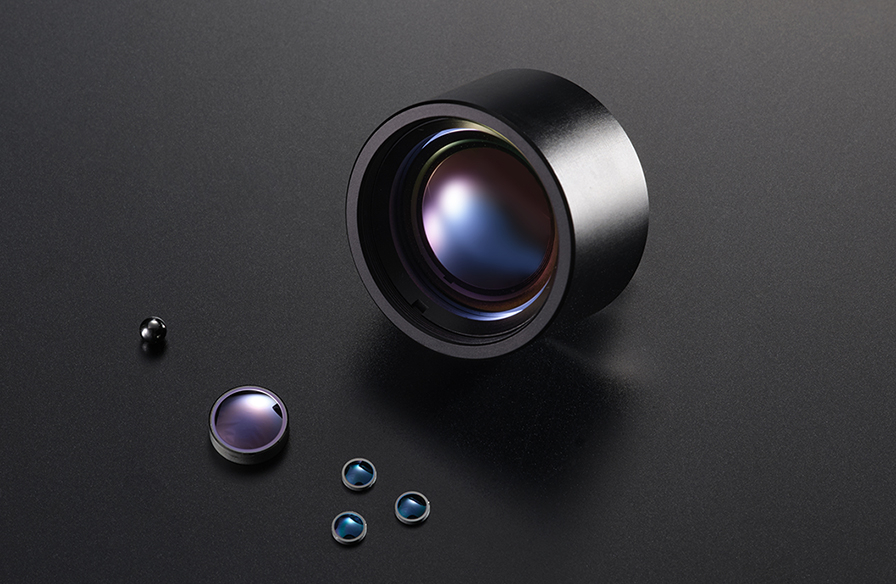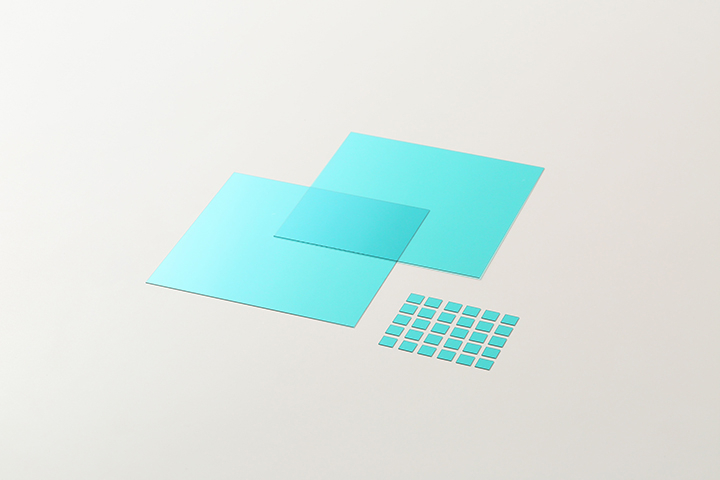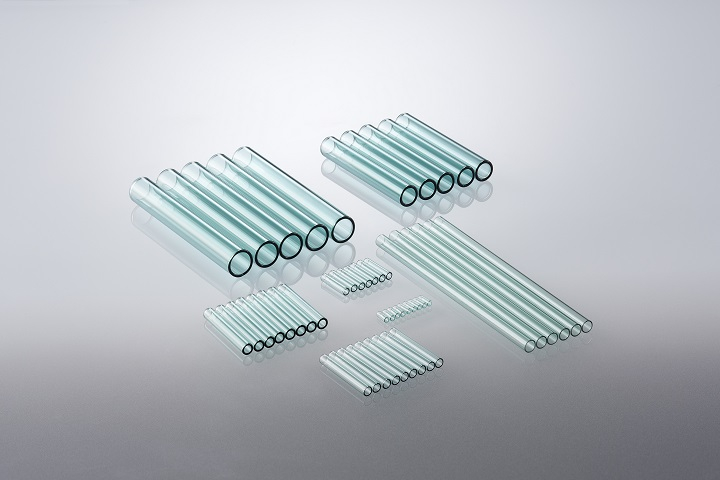Development of Glass with Controlled Transmittance over a Wide Range of Light Wavelengths
One of the key advantages of glass is its ability to control light transmission properties by incorporating transition metal elements and adjusting absorption wavelengths. Glass with minimal impurities absorbs almost no visible light, providing excellent light transmission properties. This makes it ideal for use in optical and video equipment.
Wavelengths shorter than visible light include ultraviolet rays, X-rays, and gamma rays, while longer wavelengths encompass infrared and radio waves. We develop and offer functional glasses that control the transmission and absorption of light in these wavelengths. For example, radiation shielding glass is used in hospital X-ray rooms, ultraviolet-transmitting glass is utilized in sterilization lamps, and infrared-transmitting glass is used in thermal imaging technology.
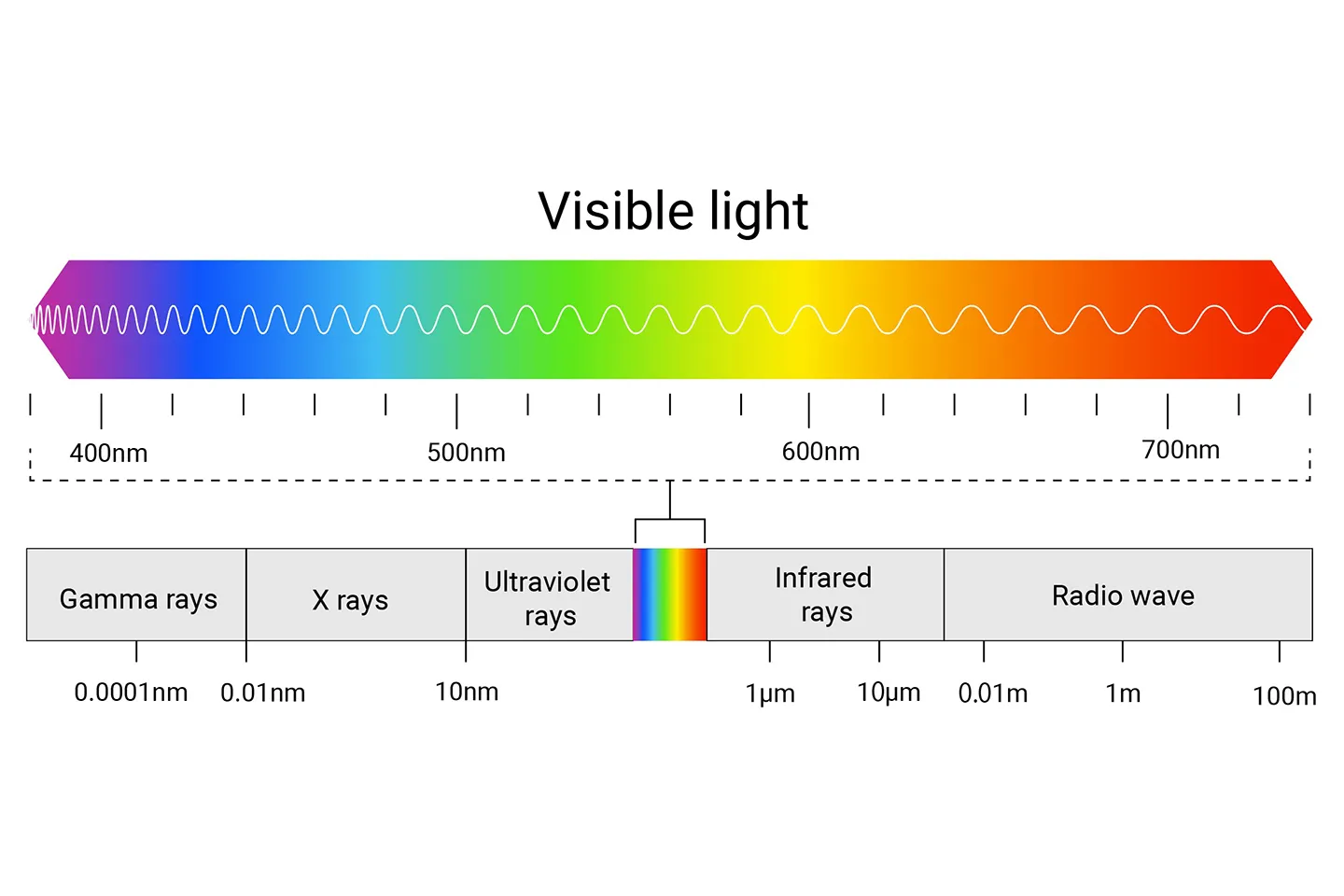
| Electromagnetic radiation (X-rays, gamma rays) | Ultraviolet rays | Visible light | Infrared rays |
|
|
|
|
Contents
Electromagnetic Radiation Shielding Glass (X-rays, Gamma Rays)
Radiation, such as X-rays and gamma rays, plays a crucial role in healthcare, particularly in X-ray imaging and CT scans. However, excessive radiation exposure can impair the body's ability to repair cells, potentially leading to health issues. Radiation shielding by lead is well-known for its effectiveness in radiation protection. In medical settings where visual inspection of the treatment area (source side) is necessary, glass with a high lead oxide content is used to offer both excellent shielding property and high visible light transmittance.
Our Radiation Shielding Lead Glass: LX-57B, provides superior radiation protection and is used across a variety of industries, including healthcare, industrial applications, laboratories, and even the nuclear sector. By utilizing large sheets of LX-57B for monitoring and operational windows in areas like X-ray rooms, CT scan rooms, and angiography suites, the field of view is significantly expanded, enhancing operability.
Furthermore, in positron emission tomography (PET) imaging, which uses gamma rays that are more penetrating than standard medical X-rays, enhanced shielding is essential. Our Gamma Ray Shielding Lead Glass: Pro-GR, with approximately 70% lead oxide content, is specially engineered for this purpose.
Through careful adjustment of the glass composition, we develop and provide radiation shielding glass tailored to specific applications. The superior shielding performance of our glass ensures medical personnel are protected from radiation exposure while supporting accurate and rapid diagnoses with high transparency, delivering both peace of mind and comfort in healthcare environments.

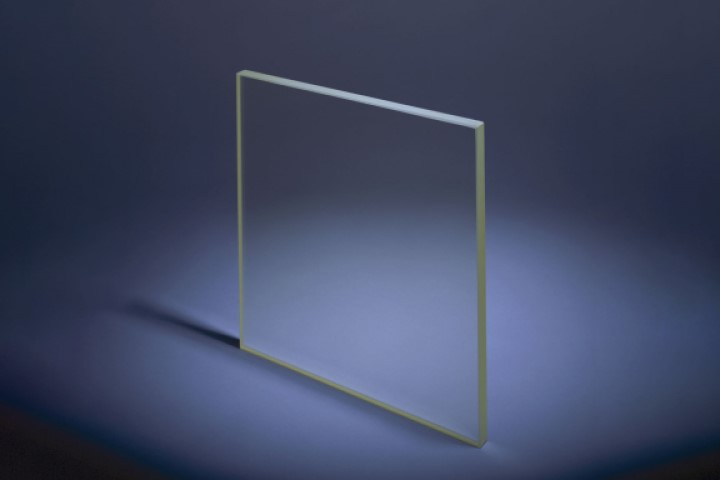
Glass with Controlled Ultraviolet Rays Transmission Properties
Ultraviolet (UV) rays span a light wavelength range of 10 to 400nm, which is further divided into UV-C (100 to 280nm), UV-B (280 to 315nm), and UV-A (315 to 400nm). Wavelengths shorter than 200nm are classified as vacuum ultraviolet. Each UV wavelength range has unique properties, such as ozone production, bactericidal action, and photochemical reactions.
By adjusting the composition of glass, we develop and provide functional glass that controls the transmission and absorption of ultraviolet rays. For example, Amber Glass Tubing for Pharmaceutical Containers: BS-A, shields UV rays, preventing the deterioration or alteration of the substances inside the container. Additionally, UV Shielding Ultra-thin Glass, BDX-2, which offers high UV shielding performance in the UV-C to UV-B range, is used as a cover for perovskite and satellite solar cells, protecting these devices from UV rays and extending their lifespan. UV-C High-transmitting Glass Tubes: BU-41, are also employed in applications such as virus sterilization, UV lighting, UV cold cathode tubes, and UV light sensors.
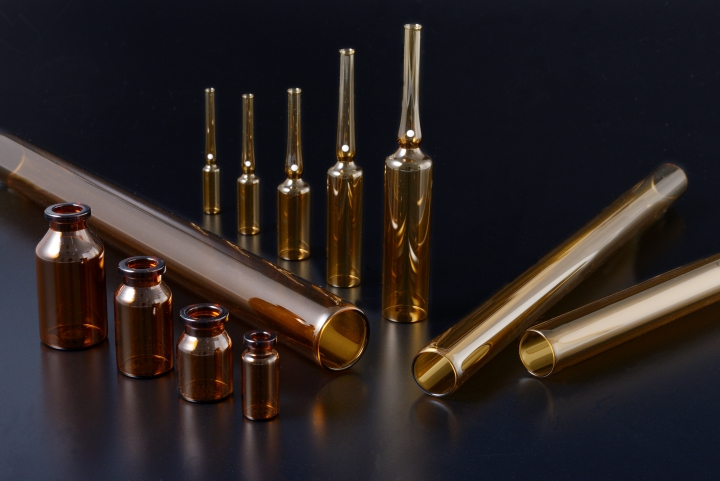
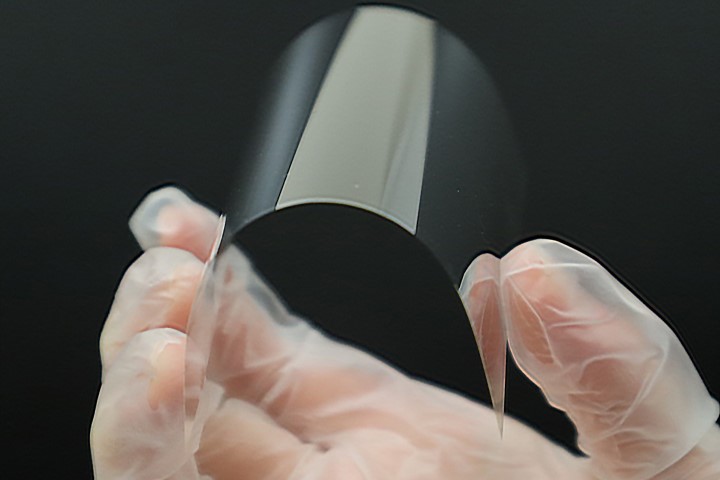

Glass with Controlled Visible Light Transmission Properties
Visible light refers to electromagnetic waves within the wavelength range detectable by the human eye. According to JIS Z 8120, the lower limit of visible light's wavelength is approximately 360-400nm, while the upper limit is around 760-830nm. One of the notable features of glass is its ability to control light transmission properties by incorporating transition metal elements and adjusting absorption wavelengths and absorbance.
While various colored glasses have been used for decoration since ancient times, today, glass also functions as an optical filter to precisely regulate light transmission properties. For example, our Glass Tubing for Lighting: PS-94NA, is used in automobile turn signal lamps. The orange color of the glass eliminates the need for additional coloring after the lamp's processing. Furthermore, glass with minimal impurities absorbs almost no visible light, offering excellent light transmission properties, making it ideal for optical and video equipment. Our High Refractive Index Glass for Augmented/Mixed Reality provides a wide viewing angle and high transmittance, ensuring bright, clear images. We also offer high-transmittance plate glass with various characteristics for electronic components, including our Flat Glass for Electronic Devices (BDA™), which is used in image sensors with increasing pixel density.
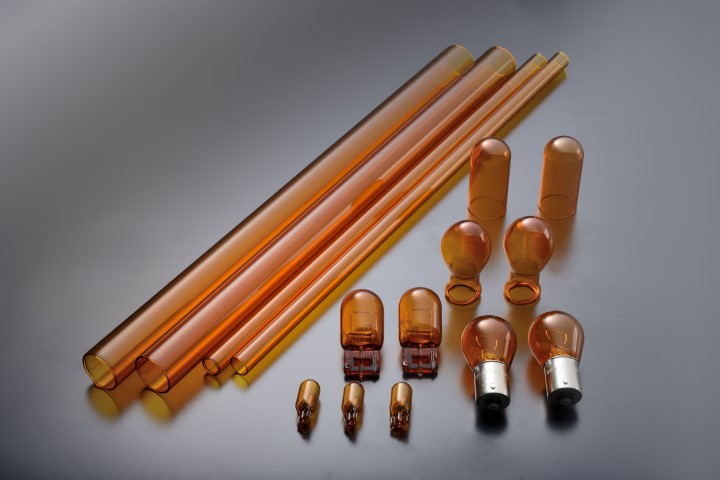
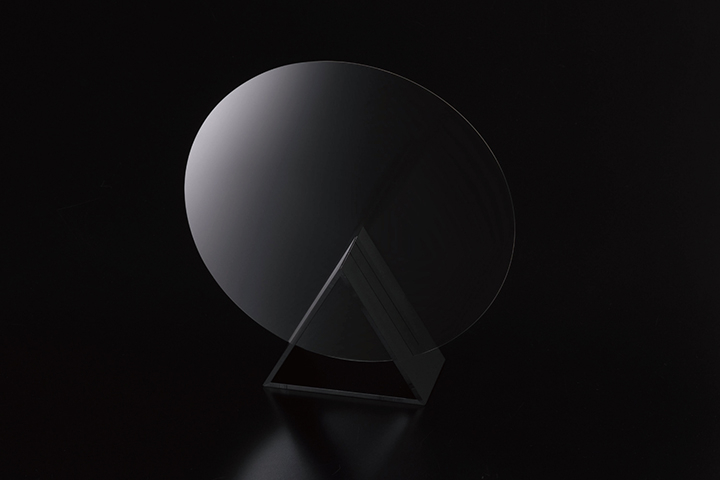
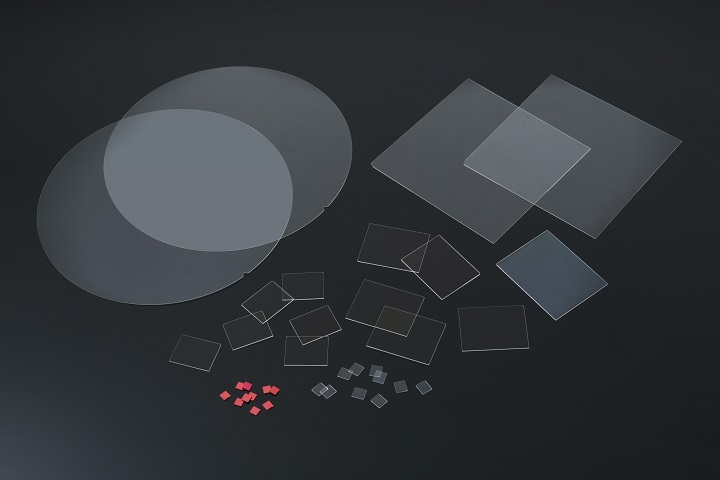
Glass with Controlled Infrared Rays Transmission Properties

Infrared rays refer to electromagnetic waves in the wavelength range of 780nm to 100μm, emitted by all objects, though they are not visible to the human eye. Often associated with heating, infrared rays are sometimes referred to as heat rays. The amount of radiation emitted by an object above absolute zero is directly related to its temperature. Infrared rays are classified into three categories based on wavelength: near-infrared (750–2500nm), mid-infrared (2500–4000nm), and far-infrared (4000nm and beyond).
By adjusting the composition of the glass, we develop and provide functional glass types that control the transmission and absorption of infrared rays. For example, Chalcogenide Glass (FI-02) offers excellent infrared transmission in the mid- and far-infrared wavelength ranges, making it ideal for applications such as thermal imaging, gratings, quantum cascade laser lenses, and ATR prisms. On the other hand, our IR Absorbing Filter (800 EXL™) features exceptional infrared absorption properties and is used in infrared filters for devices like interchangeable lens cameras, video cameras, surveillance cameras, and smartphones.
Additionally, our High Infrared-Absorbing Glass Tubes (STI, SRI, SHI), which are used in reed switches, are designed with enhanced infrared absorption properties, enabling localized heating by halogen lamps and lasers for sealing applications.
